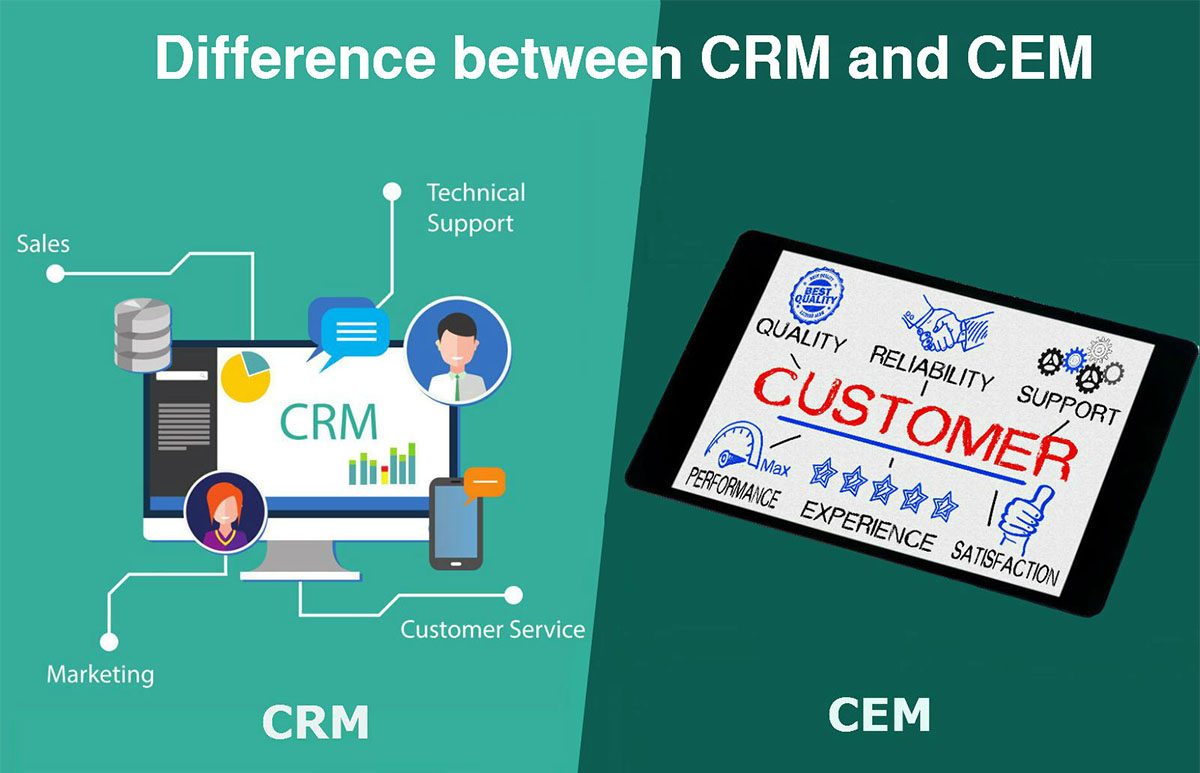
CEM vs CRM in Building a Lasting Brand
Nowadays, people enjoy abundant choices; customers are not just buying products but investing in experiences. Thus, creating a brand that stands the test of time requires more than just a great product or service. It demands a relentless commitment to delivering an exceptional customer experience.
This evolution has given rise to the concepts of Customer Experience Management (CEM) and Customer Relationship Management (CRM). While both are crucial, they operate in distinct spheres within the customer-business relationship. You need to understand their distinctions if you aim to cultivate lasting relationships with your customers.
Customer Relationship Management (CRM)
CRM focuses on the management of interactions with existing and potential customers. It’s the data-driven approach that helps in understanding customer behavior, preferences, and purchase history.
We are lucky to live in a tech-driven world where POS software has integrated CRM software to facilitate the organization and utilization of this information for personalized communication, targeted marketing, and sales strategies. It’s about optimizing touchpoints to convert leads into loyal customers.
The Role of Customer Relationship Management
Customer Relationship Management (CRM) focuses on managing and optimizing interactions with individual customers. CRM systems are tools that centralize customer data, streamline communication, and enhance personalized interactions.
- Individual Customer Management:
CRM systems help you keep track of individual customer interactions, preferences, and purchase histories. This personalized approach allows for targeted marketing, improved customer service, and more effective sales strategies.
- Efficient Communication:
CRM tools facilitate communication across departments, ensuring that every team member has access to relevant customer information. This cohesive approach reduces redundancy and ensures that customers receive consistent, personalized experiences across various touchpoints.
- Sales and Marketing Alignment:
CRM systems bridge the gap between sales and marketing teams. By providing a unified view of customer data, businesses can align their efforts, ensuring that marketing campaigns resonate with the target audience and that sales teams are well-informed and equipped to close deals.
The Rise of Customer Experience Management
Customer Experience Management CEM is a comprehensive approach that encompasses every interaction a customer has with a brand throughout their entire journey. From the first point of contact to post-purchase support, CEM focuses on creating positive, seamless, and memorable experiences.
CEM integrates all touchpoints—online, offline, pre-purchase, post-purchase—to create a seamless and delightful experience. It’s the emotional connection that drives customer loyalty and advocacy.
Unlike traditional approaches that may be transaction-centric, CEM is holistic, considering emotional connections, feedback, perceptions, and the overall journey.
- Holistic Customer Journey:
CEM recognizes that every touchpoint matters. From the initial awareness stage to the final post-purchase engagement, each interaction shapes the customer's perception of the brand.
By understanding and optimizing the entire customer journey, businesses can proactively address pain points and exceed expectations at every turn.
- Emotional Connections:
Beyond functional utility, CEM recognizes the emotional aspect of customer interactions. Building emotional connections fosters loyalty and advocacy. Brands that resonate on an emotional level create customers who not only return but also become advocates, spreading positive word-of-mouth.
- Feedback and Continuous Improvement:
CEM involves gathering and analyzing customer feedback systematically. By actively seeking input, businesses can identify areas for improvement and adjust their strategies accordingly. This iterative process ensures that the brand evolves in sync with customer expectations.
Building a Brand through CEM
Understanding Customer Needs and Expectations
Effective CEM begins with understanding your customers—what they need, what delights them, and what frustrates them. Feedback, analytics, and market research play a crucial role in deciphering these expectations.
Consistency Across Touchpoints
Every interaction, whether a website visit, an email response, or an in-store experience, should reflect the brand’s values and commitment to providing an excellent experience. Consistency builds trust and reliability.
Empowering Employees
Employees are the face of your brand. Empower them to deliver exceptional service by investing in their training, providing the necessary tools, and cultivating a customer-centric culture within the organization.
Continual Improvement
CEM is an ongoing process. Analyze feedback, adapt to changing customer needs, and continuously improve the experience you offer. Innovation and evolution are key to staying ahead in the ever-evolving market.
The Impact: Why Customer Experience Matters
Brand Loyalty and Advocacy
Exceptional customer experiences breed loyalty. When customers feel valued, understood, and cared for, they return and become brand advocates. Positive experiences are shared, attracting new customers through word-of-mouth—a potent marketing tool.
Differentiation in a Saturated Market
In a sea of similar products or services, the experience you provide becomes a key differentiator. Companies that prioritize customer experience stand out by offering something beyond the transaction—an emotional connection and a memorable journey.
Increased Revenue and Growth
Happy customers spend more. Studies consistently show that customers are willing to pay a premium for a better experience. By focusing on CEM, businesses not only retain customers but also increase their lifetime value and drive revenue growth.
Harmonizing CEM and CRM for Optimal Results
The most successful brands recognize that CEM and CRM are not mutually exclusive but rather complementary. By harmonizing these two approaches, businesses can create a customer-centric ecosystem that nurtures lasting relationships.
Integrated Data Ecosystem
Connect CEM and CRM systems to create a unified view of customer data. This integration ensures that both the individual customer interactions (CRM) and the overarching customer journey (CEM) are considered in tandem.
Proactive Problem Solving
Use CEM insights to identify potential pain points in the customer journey and leverage CRM data to address individual customer issues. Proactive problem-solving enhances the overall customer experience and builds trust.
Personalization at Scale
Combine CRM's customer insights with CEM's understanding of the broader customer journey to deliver personalized experiences at scale. This tailored approach demonstrates a deep understanding of customer needs and preferences.
In the pursuit of building a brand that persists, integrate Customer Experience Management (CEM) and Customer Relationship Management (CRM) for success. While CRM focuses on individual interactions, CEM takes a holistic approach, considering the entire customer journey. By harmonizing these two approaches, you can create a customer-centric ecosystem that not only meets but exceeds customer expectations, fostering loyalty and advocacy and adapting to the ever-evolving customer expectations.





